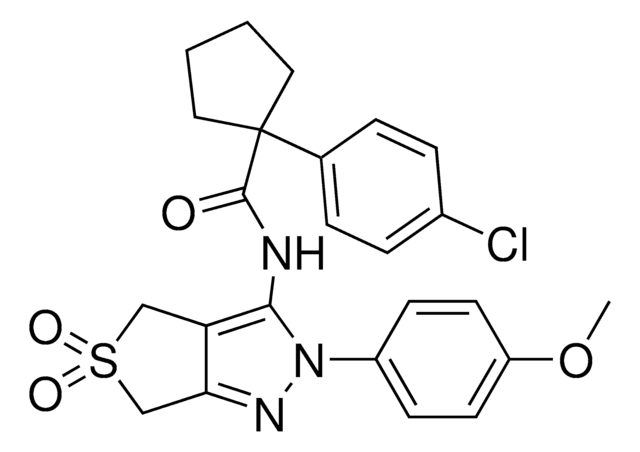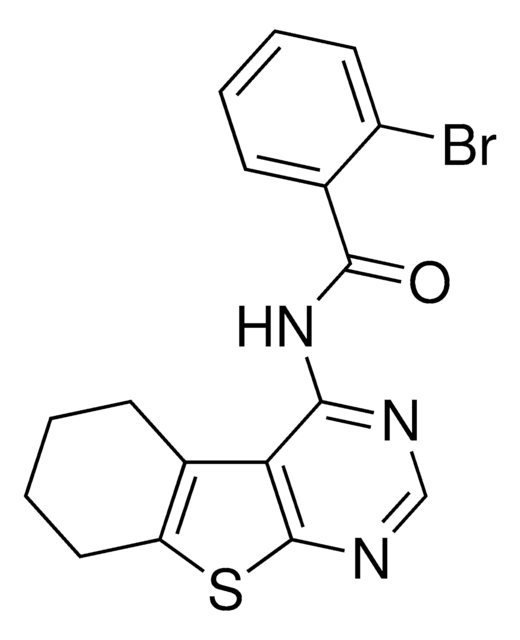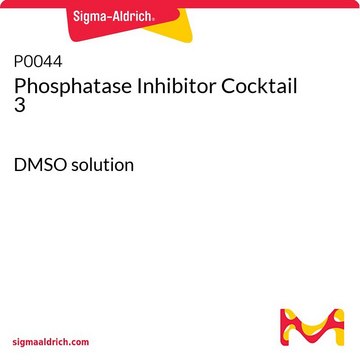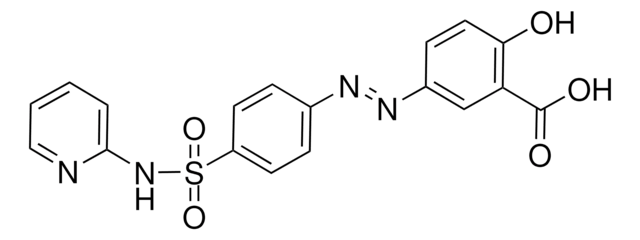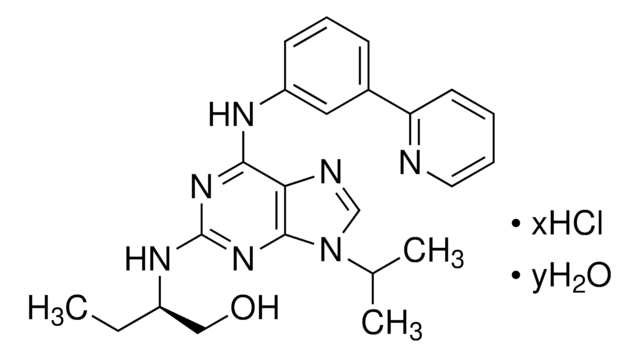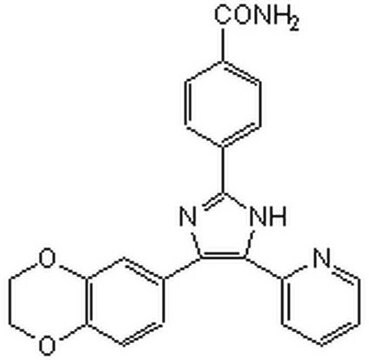추천 제품
분석
≥98% (HPLC)
양식
powder
색상
white to tan
solubility
DMSO: ≥15 mg/mL
저장 온도
2-8°C
SMILES string
CC(C)N(C=N1)C2=C1C(NCC3=CC(C(F)(F)F)=CC=C3)=NC=N2
InChI
1S/C16H16F3N5/c1-10(2)24-9-23-13-14(21-8-22-15(13)24)20-7-11-4-3-5-12(6-11)16(17,18)19/h3-6,8-10H,7H2,1-2H3,(H,20,21,22)
InChI key
REKSFCCYDQMSIN-UHFFFAOYSA-N
애플리케이션
Longdaysin may be used to study cell signaling that regulate the circadian clock and behavior.
생화학적/생리학적 작용
Longdaysin inhibits CK1, ERK2, and CDK7 kinases in low mM concentrations. The activity of longdaysin results in a lengthening of circadian periods in cell based and in vivo systems. Transgenic zebrafish harboring a per3-luc reporter gene displayed a 10 hour lengthening of circadian period when treated with longdaysin. Longdaysin reduces the phosphorylation of PER1 the regulator of molecular clock function and manipulates the circadian clock.
신호어
Danger
유해 및 위험 성명서
Hazard Classifications
Acute Tox. 3 Oral - Eye Irrit. 2 - Repr. 2 - Skin Irrit. 2 - STOT SE 3
표적 기관
Respiratory system
Storage Class Code
6.1C - Combustible acute toxic Cat.3 / toxic compounds or compounds which causing chronic effects
WGK
WGK 3
Flash Point (°F)
Not applicable
Flash Point (°C)
Not applicable
가장 최신 버전 중 하나를 선택하세요:
Tsuyoshi Hirota et al.
Science (New York, N.Y.), 337(6098), 1094-1097 (2012-07-17)
Impairment of the circadian clock has been associated with numerous disorders, including metabolic disease. Although small molecules that modulate clock function might offer therapeutic approaches to such diseases, only a few compounds have been identified that selectively target core clock
Urs Albrecht
Handbook of experimental pharmacology, (217)(217), 227-239 (2013-04-23)
Circadian clocks are present in nearly all tissues of an organism, including the brain. The brain is not only the site of the master coordinator of circadian rhythms located in the suprachiasmatic nuclei (SCN) but also contains SCN-independent oscillators that
Tsuyoshi Hirota et al.
PLoS biology, 8(12), e1000559-e1000559 (2010-12-24)
The circadian clock underlies daily rhythms of diverse physiological processes, and alterations in clock function have been linked to numerous pathologies. To apply chemical biology methods to modulate and dissect the clock mechanism with new chemical probes, we performed a
Sandipan Ray et al.
Life science alliance, 2(6) (2019-12-04)
Determining the exact targets and mechanisms of action of drug molecules that modulate circadian rhythms is critical to develop novel compounds to treat clock-related disorders. Here, we have used phenotypic proteomic profiling (PPP) to systematically determine molecular targets of four
자사의 과학자팀은 생명 과학, 재료 과학, 화학 합성, 크로마토그래피, 분석 및 기타 많은 영역을 포함한 모든 과학 분야에 경험이 있습니다..
고객지원팀으로 연락바랍니다.